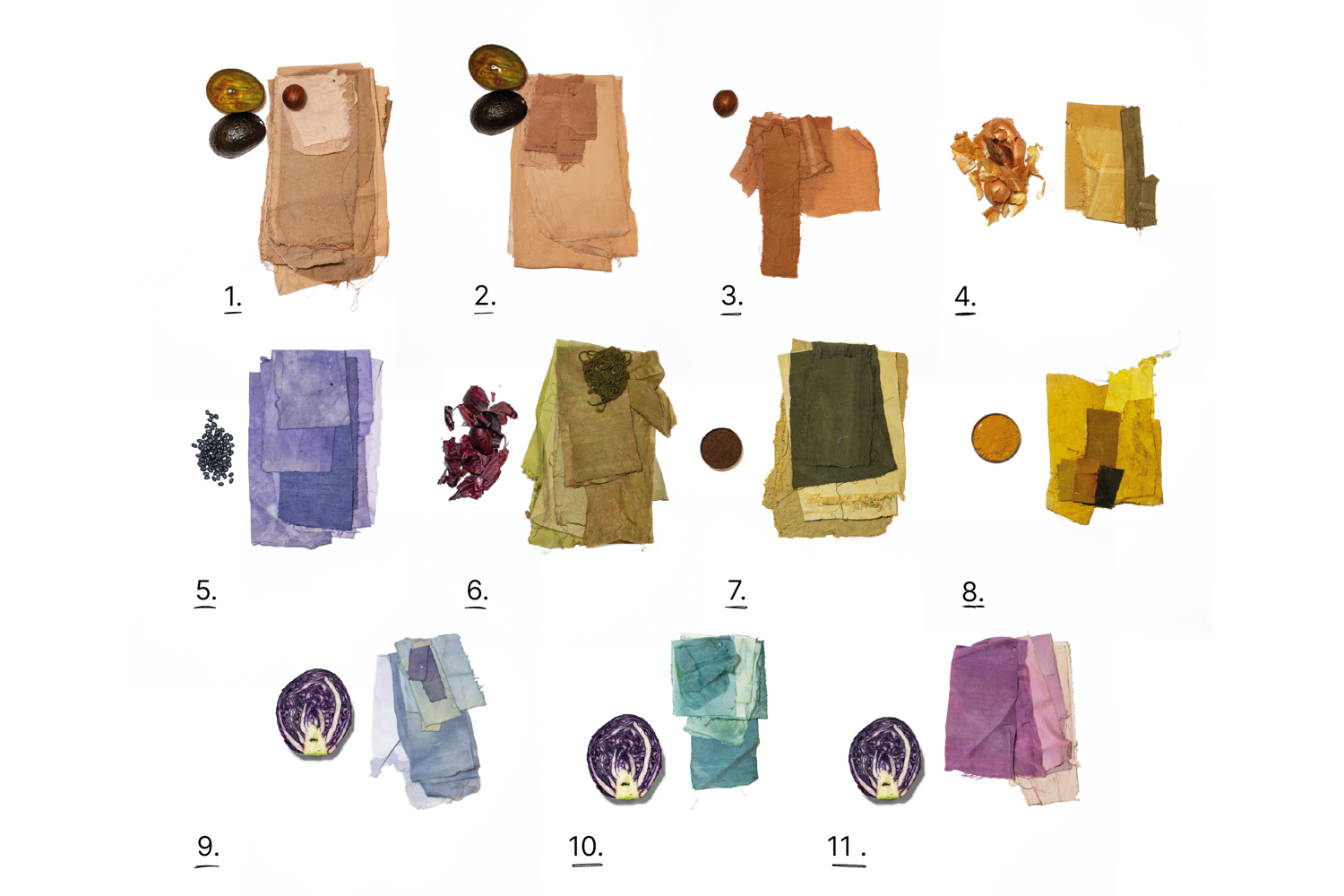Recolor
 Recolor
Recolor
Sometimes in the laundry, the colour, blacks or whites can fade out and lose its brightness or colour depth. As you may have seen in the Care video this can be the result of mixing wrong colours, sweating or wearing it out. If the Care methods don't work you can dye your clothing Chemically or Naturally, both come with their upsides and downsides. It depends on your needs and what the best options are.

Natural VS Chemical Dyeing
| Natural Dying | Chemical Dying |
|---|---|
| 🟢 More ecological option | 🔴 Consist of heavy toxic chemicals |
| 🟢 Dye can be disposed in sink or on acid loving plants | 🔴 Pollutes water |
| 🟢 Beautiful ancient craft | 🔴 Mwa |
| 🟢 Insane the colour plants and food waste can give | 🔴 Usually made from oil |
| 🟢 Friendly | 🔴 Might cause skin irritation on sensitive skins |
| 🔴 Takes way more time | 🟢 Fast and easy way |
| 🔴 Hard to replicate colors | 🟢 Stable outcome |
| 🔴 Quite experimental | 🟢 Not much preparing needed, just go |
| 🔴 Can only be done by hand | 🟢 Possible by hand and machine |
| 🔴 Has no effects on Synthetic fibres | 🟢Tends to stick to more fibres |
As you can see both have their upsides and downsides. It depends on your situation and time what makes most sense.
Note: Never mix the tools you use for dyeing with tools you use for cooking. Even when you use Natural Dye as the plants or pretreating ingredients, they can be toxic and may contain high amounts of metal and are harmful for the ingestion. So keep them separate.
Overview of steps for Dyeing
Chemical dyeing is mostly used in the washing machine. Make sure to read the instructions of your packaging thoroughly to get the ultimate results. Natural dyeing is shown briefly in the video and has quite a few steps. Below is the overview explaining the process. Let us know in Discord if you want an in-depth video about this topic!
- Figure out the fibre of your clothes:
- 🐑 Animal-Based types - Are more sensitive to heat and need extra care and attention when preparing the fibre and throughout dyeing. Doing this will give you the most vibrancy. Give it plenty of time in the pot to allow the dye to bite the fabric.
- 🌱 Plant-based types - Are more robust and can withstand high temperatures and a lot more vigorous processing. That’s why we would recommend beginners to try out Natural dyeing with plant-based clothes first. The colours can vary a lot depending on how you prepare the garment, for instance with or without mordant. But the colours will always be more faded and duskier looking than with animal-based fibres.
- 🛢 Synthetics - We don’t recommend it as it gives no results.
- Choose a colour that works on your Fibre (avocado, acorns, flowers, turmeric etc.)
- Scour your fabric This removes residual starch, natural oils or sweat, which is needed to create an even dye. We will make a separate video eventually for this step by step, but a good source is: https://botanicalcolors.com/how-to-scour/ Be aware that both fibres will shrink with an average of 10%, so we won’t recommend doing this with a garment that fits perfectly to the body as it may not fit properly afterwards.
- Mordant your fabric This helps the dye bite into the fabric for long-lasting colour, that is lightfast and wash fast. Lightfast doesn’t fade in the sun and wash fast doesn’t fade in water. We will make a separate video eventually for this, but a good source that explains it step by step is: https://botanicalcolors.com/how-to-mordant/
- Soak your fabric first in water so the dye will go in evenly.
- Prepare a dye vat (a place to soak and boil your clothes).
- Color :)
 👆 See above a few examples of where we colored with
👆 See above a few examples of where we colored with
- Avocado (Skins + Nuts)
- Avocado (Skins)
- Avocado (Nuts)
- Yellow Onions Skins
- Black Beans (Residue water of soaking beans)
- Red Onion Peels
- Coffee + Rust water/ Acorns + Rust water
- Turmeric
- Red Cabbage
- Red Cabbage with Baking soda
- Red Cabbage with Lemon But also Camomille, Hibiscus, Oxidized Copper, Pomegranate, Carrots and Beetroots. All of them are favourites, besides Beetroot, Carrot, Nettle and Red cabbage as the dye molecules don't bind with the fabric even with a mordant.
If you have any questions about this topic sure to visit our community chat on Discord. Many skilled and likeminded people are in there :)
